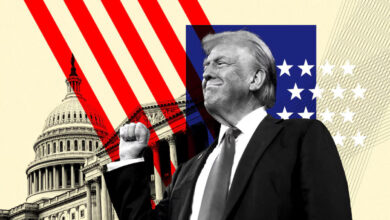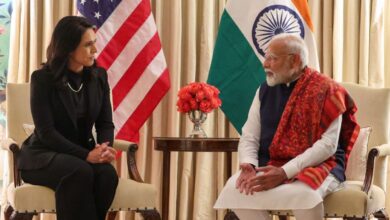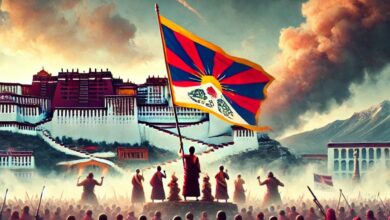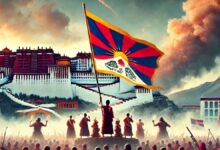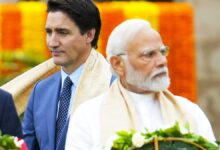What If, Pakistan Impose Complete Ban on Trading With India?

Hi everyone, you people must be aware of the fact that Pakistan had cut off trade with India, after the revocation of the special status of J&K Article 370 and 35A from J&K. Imran Khan’s government and now Shahbaz Shariff’s government have said that they will not revive trade until India reinstate the Art370. In this article, we are going to take look at India’s Pakistan Trade history, if Pakistan imposes a complete ban on trading, what will be the effect of this ban on both economies.
History of India Pakistan Trade

According to the PHD Chamber of Commerce and Industry, in 1948, 70 per cent of Pakistan’s trade was with India, whereas Pakistan accounted for 63 per cent of Indian exports. But after 1949 Indo-Pak trade relations witnessed a rapid decline, further the official bilateral trade declined from Rs. 184.06 crore of Indian rupees in 1948-49 to Rs. 13.63 crore in 1958 and to an all-time low of Rs.10.53 crore in 1965-66. After the 1965 war, there was a trade embargo between India and Pakistan, which continued till 1974 and trade resumed only after a trade protocol (Shimla Agreement) was signed.
After this trade and commerce picked up speed between both countries, Pakistan joined the Delhi International Trade Fair, which facilitated the exchange of trade delegations between the two countries. South Asian Preferential Trading Arrangement (SAPTA), signed in 1995, includes items for which tariffs were lowered.
India accorded Most Favoured National (MFN) status to Pakistan in 1996, the same year, Pakistan increased its positive list to 600 items that may be imported from India. To further increase trade between countries, the third round of Composite Dialogue process discussions was held in 2006, where both countries agreed to discuss the new shipping protocol, the deregulations of air services, the joint registration of basmati rice, an increase in the size of Pakistan’s positive list, proposals for information-technology-related medical services and export insurance by India.
In Commerce Secretary Level Talks between two countries in 2011 in New Delhi, both countries agreed to develop mechanisms to address issues of Non-Tariff Barriers. Same year Pakistan agreed to grant the Most Favoured Nation (MFN) status to India to boost bilateral trade.
Trade and Terror Can’t Go Hand in Hand
After the Uri terrorist attack where Pakistani-supported Lashkar terrorists carried out the cowardly attacks on Indian troops, and the subsequent ‘Surgical Strike’ by the Indian Army, caused a fall in India’s exports to Pakistan from around 16 per cent to $1.82 billion in 2016-17 from $2.17 billion in 2015-16. Although Indian exports rose nearly 6 per cent to $1.92 billion in 2017-18, and then by around 7 per cent to $2.07 billion in 2018-19. Imports from Pakistan also increased by 7.5 per cent to $488.56 million in 2017-18 from $454.49 million in 2016-17. But India withdraw MFN status from status and imposed a 200% tariff on Pakistani imports, after the Pulwama attack, where Pakistan-based Jaish-e-Mohammed terrorist group carried out a suicide attack on CRPF vehicles in Pulwama, 40 of our troops made supreme sacrifice on February 14, 2019.

After this trade between the two countries suffered heavily – India’s exports to Pakistan fell nearly 60.5 per cent to $816.62 million. India made clear that, until Pakistan stops sponsoring terrorist relations( trade relations as well) will not be normal, to simply state “Talks(Trade) and Terror” can’t go hand in hand. After the revocation of Article 370 and 35a by India, Pakistan suspended bilateral trade with India, but they continued importing pharmaceutical products from India, but some experts say, an underlying reason for suspending trade was the 200 per cent tariff imposed by New Delhi on Pakistani imports earlier that year after India revoked Pakistan’s Most Favoured Nation (MFN) status in the aftermath of the Pulwama terrorist attack. The total bilateral trade between India and Pakistan was USD 329 million in 2020-2021, as of now it has gone up to USD 514 million in 2021-2022, as per the ministry of commerce.
Pakistan Wants To Revive Trade With India, But Why Now?
Former commerce adviser Razak Dawood spoke about the revival of trade with India, “as far as the ministry of commerce is concerned, its position is to do trade with India. And my stance is that we should do trade with India and it should be opened now,” said Razak Dawood. Former security adviser, Moeed Yousuf was also on the same page regarding trade with India. In March 2021, the Economic Coordination Committee (ECC) announced it allowed the private sector to import 0.5 million tonnes of white sugar and cotton from India. But it was reversed within days after facing criticism from the main opposition parties—PML-N and PPP—who are now in government.

The main reason to revive trade with India is its stunning economic condition, if Pakistan fails to secure a bailout package from IMF, then the country can even plunge into bankruptcy. With economic recession caused by the Wuhan Virus pandemic (AKA Chinese Virus), added to rising in the price of commodities and oil prices due to Russia Ukraine conflict, caused the rise in inflation, the rise in fuel prices and free fall of the Pakistan Rupee along with its mounting external debt which is said to be staggering 239 Billion dollars.
Pakistan with its record breaking tenure in FATF, cost it approximately 38 Billion Dollars, according to some reports published in Pakistan. The Pakistan’s decision to lift the ban on cotton imports from India is due to a shortage of raw material for Pakistan’s textile sector, which was the result of low domestic yields of cotton. Also, imports from US and Brazil are costlier and would take longer to arrive. There are some reports which say Pakistan is illegally hoarding Indian wheat sent to Afghanistan as humanitarian aid to the people of Afghanistan. Its shows the shortage of wheat, sugar( Tamatar LoL!) and other essential commodities.
Prospect Trade Between India And Pakistan
Before looking into the possibilities of India-Pakistan trade let us look at the major things India and Pakistan Trade.
| Items Trade | India’s major import from Pakistan | Pakistan’s major import from India |
| mineral fuels and oils, edible fruits and nuts ($103.27 million) salt, sulphur, stone and plastering materials ores, slag and ash ($17.18 million and raw hides and leather | cotton, Wheat, Sugar etc organic chemicals Plastic tanning/dyeing extracts nuclear reactors, boilers, machinery, and mechanical appliances pharmaceutical products, oh how can we forget various types of Vaccines including the Covid 19 vaccines(Though Pakistan get these vaccines through UN vaccine fund) |
There is no denying fact that if India and Pakistan start trading with each other, there is immense scope Of development for both countries, there are a lot of areas in trade, business, and commerce where both countries can cooperate with each other. It would have a significant impact on both countries’ economies. Pakistan can benefit from cheap Indian cotton, which would give a huge boost to its textile industries, and could benefit a lot from Indian cotton just like Bangladesh is benefitting. Import of sugar, wheat, rice, and vegetables might help Pakistan citizens with cheap prices, better quality medicines from India, and more medical visas for Pakistanis for better medical treatment from Indian hospitals at relatively low cost, these are just a few things where Pakistan can benefit, as I said there is lot area that is left to explore.

For India, Pakistan can give access to Central Asian countries, which can be a huge market for Indian goods, despite the difficulty in connectivity, there have been a lot of Indian projects that are going on in Central Asia, and Indian company have a significant presence in Central Asia. Central Asia is very important for Indian energy security because we import natural gas, uranium, and oil from these countries. In fact, Pakistan too has a lot to benefit from Central Asia, it can get natural gas which will be important for its energy needs.
Conclusion
India had made it clear that the onus lies on Pakistan in matters of trade, for India “Terror and Trade” can’t go together. The trade ban between the countries would affect Pakistan more since it relies heavily on India for key raw materials for its textiles and pharmaceutical industries. The effect of this trade ban on India will be negligible, in-fact Pakistan is not even in the top 50 of our trading partners. India is working with Iran to get connectivity to the Central Asian Region via Chabahar port, along with this, India is also working with Russia, Iran, and Georgia, in creating International North-South Corridor(shown in the above pic) to improve connectivity with Russia.
Pakistan has to come out of its dream of strategically competing with India, but rather should focus more on strategic geo-economic cooperation(As said by Gen Qamar Javed Bajwa) with India. Its up-to Pakistani army and its political leadership to keep their national and its common citizen’s interests ahead of their personal and party’s interests.



